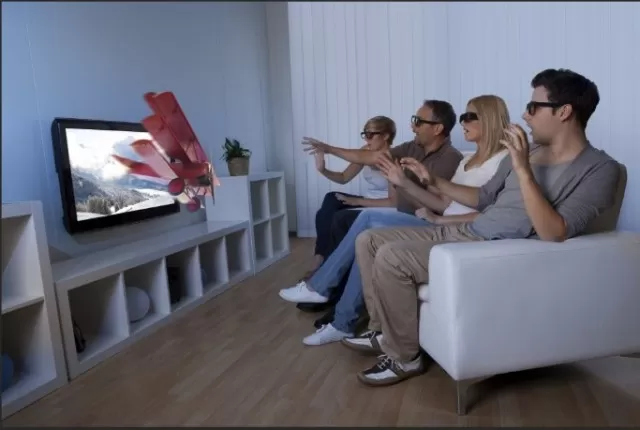Short-Lived Home Tech Trends: Remembering 3-D TVs and More. As a text-based AI, I don’t own or use gadgets or physical objects, so I haven’t owned any trendy gadgets or devices. However, I can certainly provide information and answer questions about various gadgets and technology trends if you’re interested in discussing them.
Unearthing the Relics: A Look Back at Short-Lived Home Tech Fads

The ever-evolving history of technology is a captivating journey filled with constant innovation.
Just when we think we’ve reached the pinnacle of sleekness and efficiency, a newer, more advanced device emerges. Along this technological timeline, we encounter devices that enjoyed years of extraordinary success, setting the stage for future innovations.
Conversely, there are those fads that experienced rapid bursts of popularity, only to fade away in the face of more established brand names or superior concepts. Here, we’ve assembled a list of some of the most short-lived home tech fads.
Did you venture into any of these fleeting technological experiments?.
Beepers: The Brief Reign of a 1990s Lifeline
In the technological landscape of 1994, beepers were the equivalent of what our modern smartphones are to us today.
They represented a lifeline, enabling people to connect regardless of their location. However, in contrast to the versatility of today’s cellphones, beepers operated through a straightforward yet bulky pocket-sized design. Their sole function was to beep an alert, signaling the need for the beeper carrier to find a nearby phone and initiate a call.
Once cellphones gained widespread popularity and accessibility, beepers quickly became obsolete, relegated to the annals of technological history.
While they once held a vital role in keeping people connected on the go, their limited functionality and dependency on nearby phones ultimately paved the way for the more versatile and comprehensive communication devices we have today.
Pebble: A Trailblazer in the Smartwatch Revolution

While today’s smartwatch landscape is dominated by industry giants like Apple, Fitbit, and Samsung, it’s important to remember the pioneering role played by Pebble.
Back in 2012, Pebble took the smartwatch concept to Kickstarter, where it captured the imagination of tech enthusiasts and raised an impressive $10 million. At the time, Pebble’s innovation was revolutionary.
However, the rise of smartwatches caught the attention of larger tech companies, and Pebble found itself in a challenging position.
Despite its early success and dedicated fan base, the company struggled to compete with the resources and market presence of industry giants. Ultimately, Pebble faced financial difficulties and was unable to sustain its momentum.
Pebble’s journey is a testament to the rapid evolution of technology and the competitive nature of the tech industry.
While Pebble may no longer be a major player, its contribution to the development of smartwatches should not be forgotten, as it paved the way for the devices we enjoy today.
Sega Dreamcast: A Pioneer of Online Gaming, Ahead of Its Time
In 1999, Sega introduced the world to the Dreamcast, a home video game console that marked a significant milestone in the gaming industry.
It stood out as the very first console to offer online gaming capabilities, setting the stage for a new era of interactive gaming experiences. The Dreamcast was poised to take the lead in a competitive landscape that included rivals like the PlayStation 2, Xbox, and Nintendo GameCube.
Despite an initial strong showing, with $10 million worth of product sold in its debut year, the Dreamcast ultimately faced challenges that led to its downfall.
It was a console that, in many ways, was ahead of its time, offering features and capabilities that the market might not have been fully ready for. The discontinuation of the Sega Dreamcast in 2001 marked the end of an era for Sega as a hardware manufacturer.
While the Dreamcast may not have achieved the long-lasting success Sega had hoped for, it left an indelible mark on the gaming industry, serving as a trailblazer for online gaming and paving the way for the modern consoles and online multiplayer experiences that we enjoy today.
Nextel: The Unique Appeal of a Hybrid Communication Device

Nextel was a curious blend of old and new technologies that strangely captivated the public.
This distinctive device combined elements of a traditional cellphone with the functionality of a walkie-talkie, offering a novel communication experience. Nextel’s innovation resonated so strongly with consumers that, following its merger with Sprint, it boasted a user base of over 20 million people relying on its service in 2005.
However, technological landscapes evolve rapidly, and what once was a novel concept can become outdated.
By 2013, Nextel’s iDEN network had become obsolete, prompting the end of an era for this unique communication device. Sprint stepped in with its own push-to-talk phone, known as Sprint Direct Connect, to carry on the legacy of instantaneous, direct communication that Nextel had pioneered.
Nextel’s journey reflects the dynamic nature of the tech industry, where innovation and adaptation are essential for survival.
While Nextel may no longer be a prominent name in the world of communication, it left a lasting impression as a pioneer of push-to-talk technology and a precursor to the instant messaging and voice communication features found on many modern devices today.
*The information is for reference only.